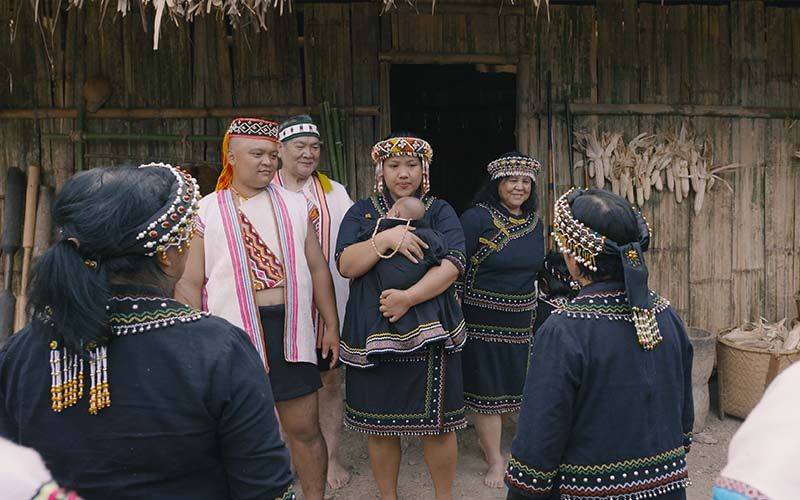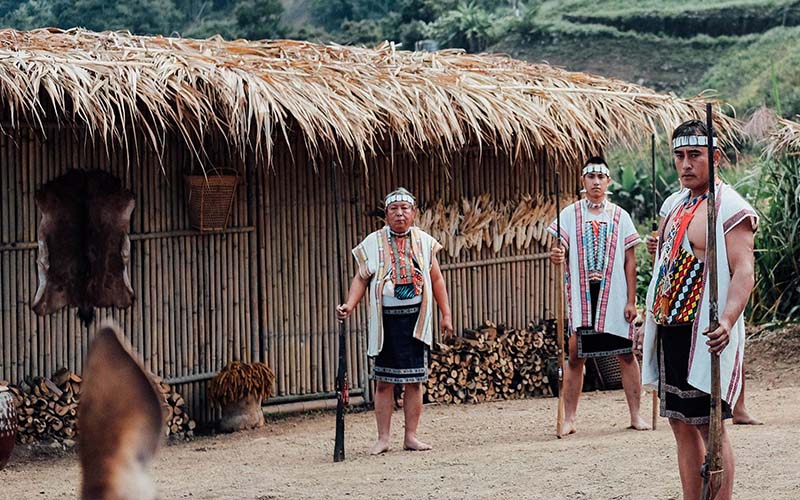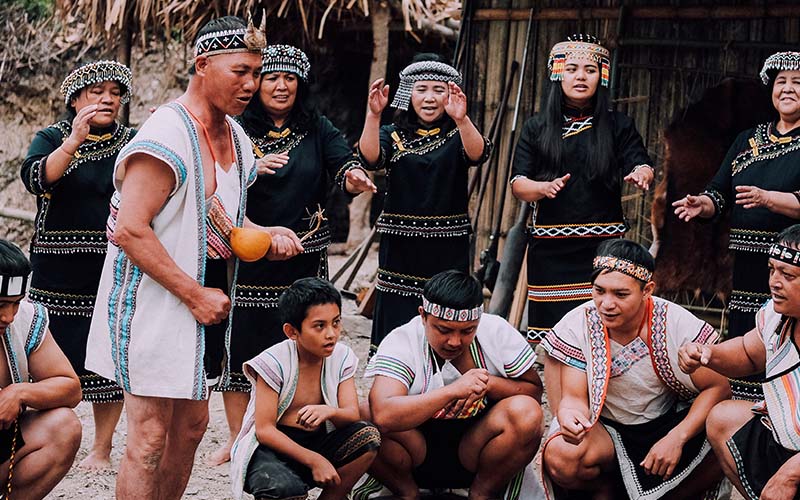
Annual festival
The Bunun tribe develops a series of traditional annual rituals specifically for its communities based on legends and myths (such as the story about how the sun turned into the moon), and these are the annual rituals:
Important festivals
Five major festivals for the Bunun tribe are an ear-shooting festival, epidemic expulsion festival, baby festival, millet sowing festival, and millet storage festival.

Baby festival

Ear-shooting festival

Harvest festival
Marriage system
The marriage system in the Bunun tribe has wedding ceremonies. It is based on the principle of patrilineal inheritance, and wives live with their husbands after marriage.
Marriage partners: Marriage between members from the same clans or within the same families is prohibited.
Funeral
The deceased Bunun tribal people are buried in a sitting position. The traditional Bunun people believe that the soul is permanently separated from the body after death, and there are good death and bad death. They are buried in the ground at home in a sitting position. Whenever there is a death in the family, a square tomb about 4 feet deep to fit the body size of the deceased is dug inside the house. Funerals are to be held during the day, and the deceased are positioned to face west (direction of the sunset). The clothing and other utensils used by the deceased are also buried, and the tomb is covered with a slate.
